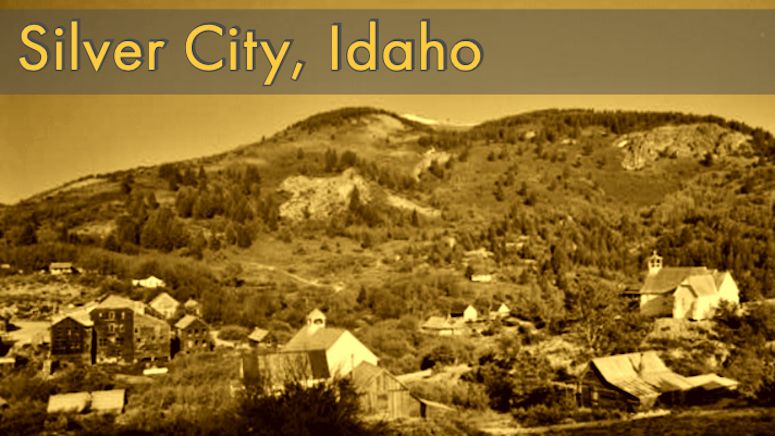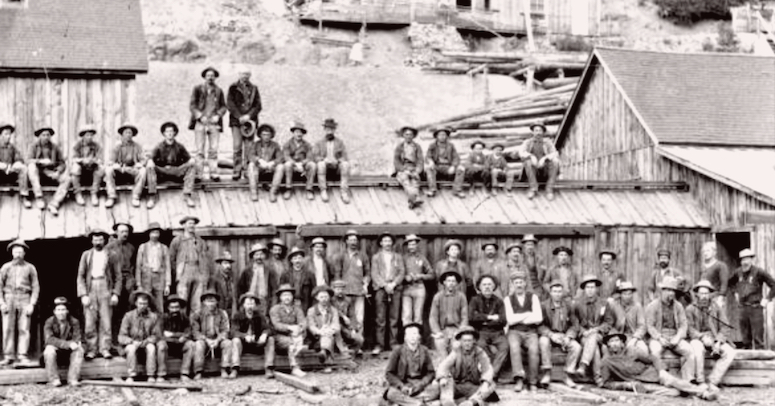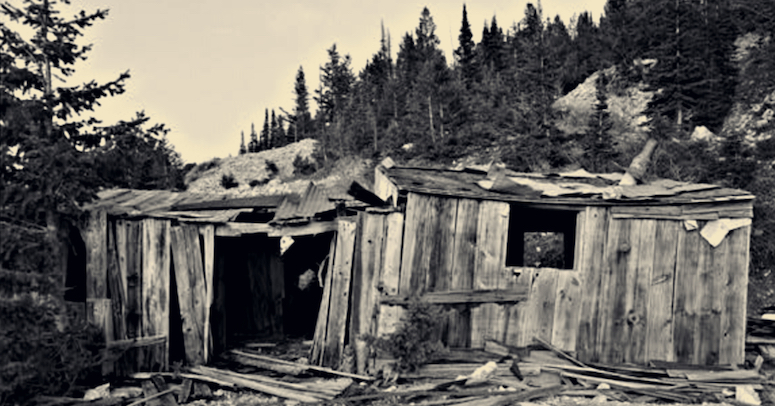
Owyhee County encompasses a vast desert known primarily for it rugged deep canyons and rich ranching heritage. There isn’t much gold in most of the county, and there has been limited mining activity for the most part. This changed when placer gold was discovered in Jordan Creek. The placers brought miners to explore this remote desert region and led to further discoveries.
The placer deposits were mined throughout Jordan Creek and other small tributaries in the area, but it was the extremely rich lode deposits that created the boomtown that would become Silver City. Let’s take a look at this historic discovery in the hills of Southern Idaho.

Rich Lodes of War Eagle Mountain
Silver was discovered in at War Eagle Mountain, the one of the highest peaks in the Owyhee Mountains. Additional lodes were found at Florida Mountain and the surrounding hills. Miners had known of the placer gold deposits for a while, but it was the extensive lode deposits of silver and gold that attracted serious attention to the region. As more miners explored the area, more and more lodes were discovered.
The population of Silver City rose from nearly nothing to as many as 2500 people. The extensive lodes that ran through the mountains attracted large mining companies with significant money to invest in such major mining operations. Men were needed to work in the mines.
Establishment of Silver City
Silver City was growing at the same time that the extensive gold mines of the Boise Basin were being mined 100 miles to the north. Thousands of men were already there working the rich gravels for placer gold, but as news of the extensive silver deposits expanded, many miners moved south to try their luck in the Silver City area.
It was indeed a source of riches, and good fortune for the people and numerous families earned quite an amount from mining. By the mid-1860s, there were about 75 businesses in town serving the people in the community.
The silver ores were so extensive, mining continued for decades. Unlike many other mining towns that do a “boom and bust” in just a few short years, the lode mines continued producing for decades. There were hundreds of active mines around War Eagle Mountain by 1865. More were located on Florida Mountain, and a few miles to the west was Delamar Mountain. Hundred more mines were established in the decades that followed.
There are literally thousands of miles of tunnel from the mines. I have heard it said that the Silver City Range would look like “Swiss cheese” if you could see all the tunnels running through it.
Silver City served as the county seat from 1867 to 1934, a testament to the richness of the mines here.

Mining crew poses in front of the Trade Dollar Mine, Silver City, Idaho.
Also Read: A Recent Visit to the Yankee Fork Gold Dredge
And: The Silver Mines of Bayhorse, Idaho
The Decline of the Silver City
When it comes to mining, all good things eventually come to an end. After years and years of extensive mining, the ores began to deplete. Although some of the mines continued on, most of the mines were already out of operation by the early 1900s.
The Delamar Mine operated just west of Silver City starting in 1977, and continued operation through 2000. This was a huge open-pit mining operation, one of the largest in Idaho. The mine is now inactive.
Some small-scale mining does take place in the Silver City area today. Jordan Creek remains heavily claimed, but if you do your research and put in the time you can find many gulches that drain into it that also contain placer gold. These areas are open to do some gold panning as long as there aren’t any active claims. The gold here is general very “silvery” in color due to its high silver content.
Much of the Silver City area is still heavily claimed by large mining companies, probably looking forward to a future when silver prices increase to a level that mining may be profitable again. There are a still some active mining going on, but the heyday is long over.

Most of the old mines and homesteads from the early days are now abandoned. Stay out of old mines and be careful around historic structures. Respect private property!
Visiting Today
Silver City is a popular area for visitors today. Some might call it a ghost town, although there are still some residents that live here and even a few small business that are open during the summer months. It is now on the National Register of Historic Places.
This is a neat area to visit because many of the old structures are still intact from the early mining days. You can see old building that stood back in the 1800s and an old cemetery filled with early miners during the rush. Look up at the mountains around the town and you will see countless mines and prospects scattered throughout the hills.
The Idaho Hotel is one of the few open businesses in Silver City now. It has the same shape and structure as it had a hundred years ago. The hotel is a must-visit site for the history lovers as its interior and preservation of objects takes you to a roller coaster of history which is fascinating and adventurous at the same time.
There is a lot of recreational opportunities in the areas. Since there is a lot of public land in the area it is a very popular area to explore with 4×4 vehicles and ATVs. Just be aware that the structures in Silver City are private property, as are many of the mines. Always use great caution when exploring around old mines and do not enter open shafts.
Next: 12 of the Richest Mining Locations in Idaho

